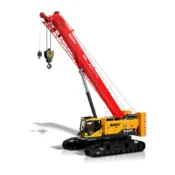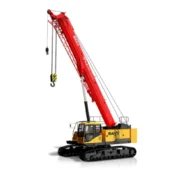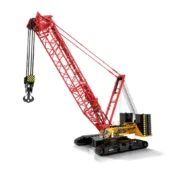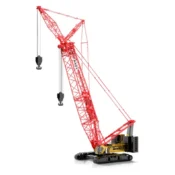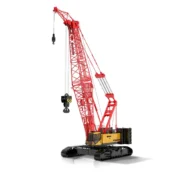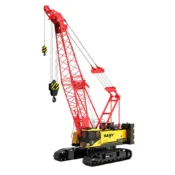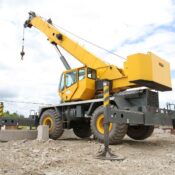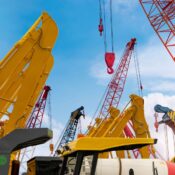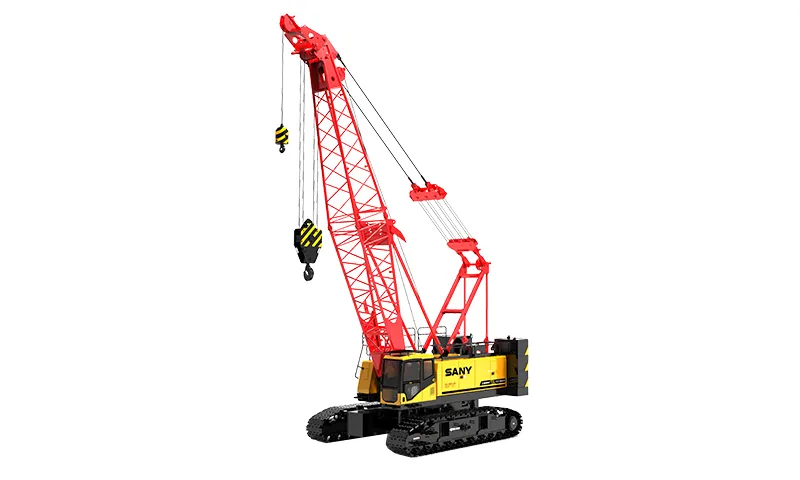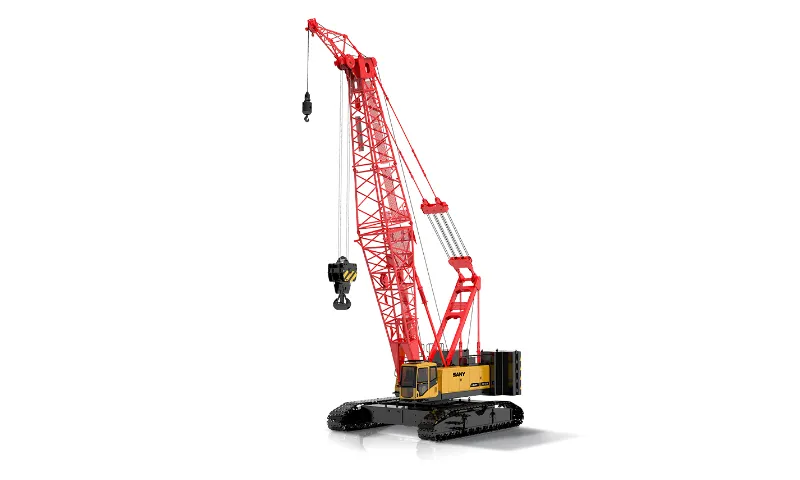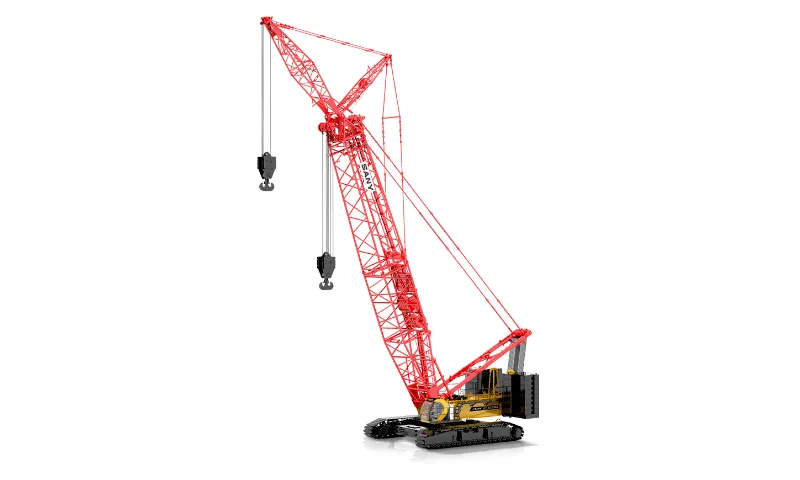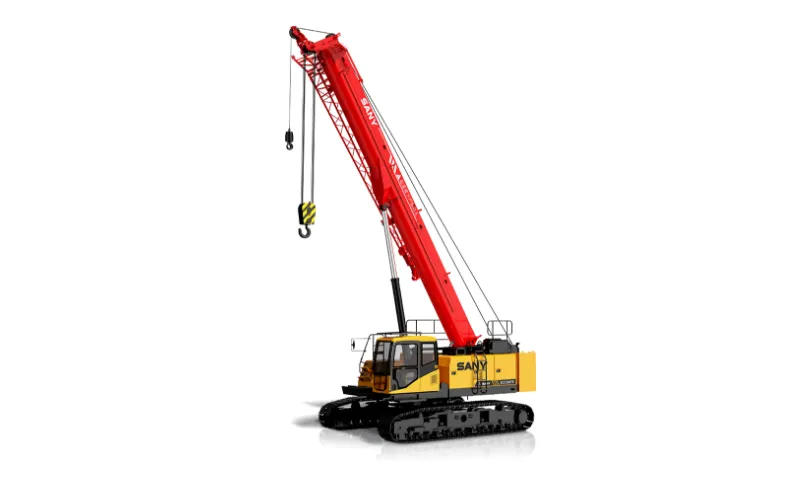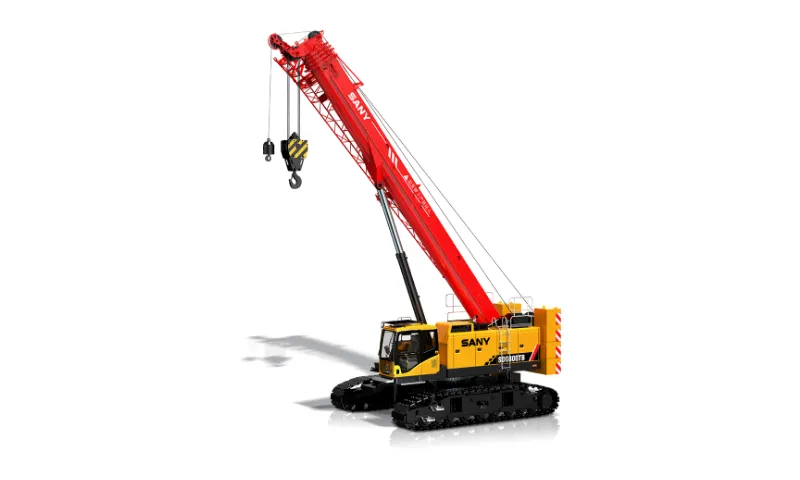Crawler Crane
Crawler Crane
A crawler crane is a type of mobile crane equipped with tracks (called crawlers) instead of wheels for mobility. Here’s a detailed note on crawler cranes:
Structure and Components:
- Crawler Tracks: Consist of a set of tracks or caterpillar treads attached to the crane’s undercarriage, providing stability and mobility on various types of terrain.
- Boom: The primary structural component of the crane, typically consisting of a lattice or telescopic boom that extends vertically to lift and move loads.
- Counterweights: Positioned on the rear of the crane to provide stability and balance when lifting heavy loads.
- Cab: Located on the upper part of the crane, providing a control station for the operator to manage lifting operations.
- Hoist: Mechanism used to raise and lower the load, typically equipped with a winch and cable.
- Jib: An optional attachment that extends from the end of the boom to provide additional reach and lifting capacity.
- Outriggers: Extend horizontally from the crane’s chassis to increase stability during lifting operations, especially when the crane is stationary.
Types of Crawler Cranes:
- Telescopic Crawler Crane: Features a telescoping boom that can extend and retract to reach different heights and distances.
- Lattice Boom Crawler Crane: Equipped with a lattice-type boom made of steel truss sections, providing high lifting capacities and flexibility for various applications.
- Compact Crawler Crane: Designed for use in confined spaces or indoor environments where maneuverability and compact size are essential.
Applications of Crawler Cranes:
- Construction: Used for lifting and placing heavy materials such as steel beams, concrete panels, and prefabricated components on construction sites.
- Infrastructure Development: Essential for tasks such as erecting bridge girders, setting utility poles, and installing signage.
- Offshore and Marine: Deployed in ports and shipyards for loading and unloading cargo, as well as for constructing offshore platforms and structures.
- Mining and Quarrying: Utilized in mining operations for lifting and moving heavy equipment and materials in rugged terrain.
- Demolition: Employed for dismantling and removing structures, such as buildings, towers, and bridges, using specialized attachments and rigging techniques.
Safety Considerations:
- Ensure proper training and certification for crane operators.
- Conduct thorough pre-operational inspections of the crane and its components.
- Adhere to load capacity limits and use appropriate rigging techniques.
- Monitor ground conditions and terrain stability to prevent tipping or sinking of the crane.
- Maintain clear communication between the crane operator and ground personnel to ensure safe operation.
Crawler cranes are versatile and powerful lifting machines suitable for a wide range of applications, particularly in challenging terrain or confined spaces. However, strict adherence to safety protocols and proper maintenance are essential to ensure safe and efficient operation.
Do you want to get estimation?
MON-SAT 8:00-9:00
+971 55 706 6098
CONTACT US
Get A Quote

Have any question
+971 55 706 6098

